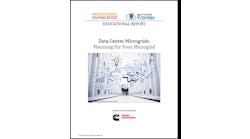Jamie Fine, of the Enviromental Defense Fund, explains how flexible demand response differs from conventional DR, and why it will be important as we modernize the electric grid.
Electricity regulators, clean energy innovators, and rappers have all lamented poor communication. And some have pushed for cleaner, cheaper, more reliable solutions for meeting our energy needs. This is particularly so with the much anticipated emergence of a new kind of non-event based, price-responsive demand response (DR), or flexible DR.
Whereas traditional DR signals customers to voluntarily and temporarily reduce their energy use at times when the electric grid is stressed, this type of DR does that and more. The big difference? It signals customers, their appliances, and their electric vehicles to increase their energy use when electricity is clean, plentiful, and cheap.
For example, electric vehicles can be programmed to charge at mid-day when the sun is bright and solar energy is at its peak, and provide electricity back to the grid when the sun sets. Better yet, many of our cars, homes, and appliances can be programmed to monitor grid conditions in real time, via the Internet, and respond accordingly by charging or defecting. Also known as a “set-it-and-forget-it” feature, this function enables the seamless integration of flexible DR while also supporting the full potential of energy efficiency measures and distributed energy resources (DERs), like rooftop solar and energy storage.
The seamless and stealth nature of this type of DR, which can be largely automated by tools and service providers, is something neither the customer nor the utility have to think about. It’s like a secret agent, operating behind walls and wires to find the greatest energy (and cost) saving-potential. Regulators need to unleash this “secret agent DR” by rewarding it fairly and efficiently in the energy marketplace, giving it a “license to thrill” in households and businesses across California.
Flexible demand response delivers serious benefits
The good news is, this innovative form of DR aligns with times of the day when electricity is cheap and demand is high. That is, solar and wind will be plentiful at times when customers generally desire to use energy. This element of flexible DR brings some serious benefits to California’s electric grid, environment, and people, including its ability to:
- Decarbonize California’s electric grid. By helping to shift demand to times of day when clean energy is plentiful, California can rely more on low-carbon resources and less on dirty ones. This is increasingly important as California adds more electric vehicles to its roads, and thus more demand to the electric grid.
- Provide a new form of flexible resource. The successful growth of wind and solar energy means grid reliability management is expanding from a focus on periods of “peak,” or high demand, to flexible demand. Flexibility refers to the need to better align electricity usage with renewable energy, while avoiding increases in energy demand when those resources are not available. This new iteration of DR constitutes an innovative form of flexible resource that is still new to grid planners, but has great promise for complementing other clean energy solutions, like utility-scale renewable resources. A recent study by the Rocky Mountain Institute (RMI) finds that, “residential use of a smart thermostat and a water heater timer for flexiwatt consumption is calculated to save U.S. utilities 8 percent of their heat-oriented generation, worth about $13.3 billion per year.”
- Empower people to be more comfortable. One example of a new kind of technology which is able to perform this kind of DR is the Nest thermostat. A recent study of Nest users across 41 states found people save about 10-12 percent in heating and about 15 percent in cooling with most participants, “feeling more comfortable after the Nest Learning Thermostat was installed.” This shows this is also a strategy that will empower energy users to be more comfortable.
Putting this exciting approach to work
In addition to recognizing its many benefits, we need to figure out how best to implement this flexible DR.
One way is for the managers of the electric grid to start planning for it. They can do this by including it in their forecasts of energy demand. This includes representing flexible DR in the California Energy Commission’s (CEC)Integrated Energy Policy Report, an annual report of trends and issues related to energy that the CEC presents to the governor and the California State Legislature. Based on this report, the legislature should enact policy to realize its potential. As the saying goes, “If we don’t plan on where we’re going, we’re likely to end up someplace else.”
When combined with other things like new electricity pricing mechanisms in California, this people-powered solution will become routine and commonplace. It will help the state get the best possible value from solar and wind while avoiding additional stress on the electric grid during times of peak demand or other grid constraints. As California aims to achieve ambitious renewable energy targets, this will be yet another powerful tool to build the state’s clean energy future.
To learn more about non-event based, price-responsive demand response (DR), or flexible DR, Jamie Fine will be describing this great opportunity in more detail during a presentation at the DR World Forum in Costa Mesa, October 6-7.
Author Jamie Fine is an a senior economist at EDF. This article originally appeared on EDF’s blog, Energy Exchange.





